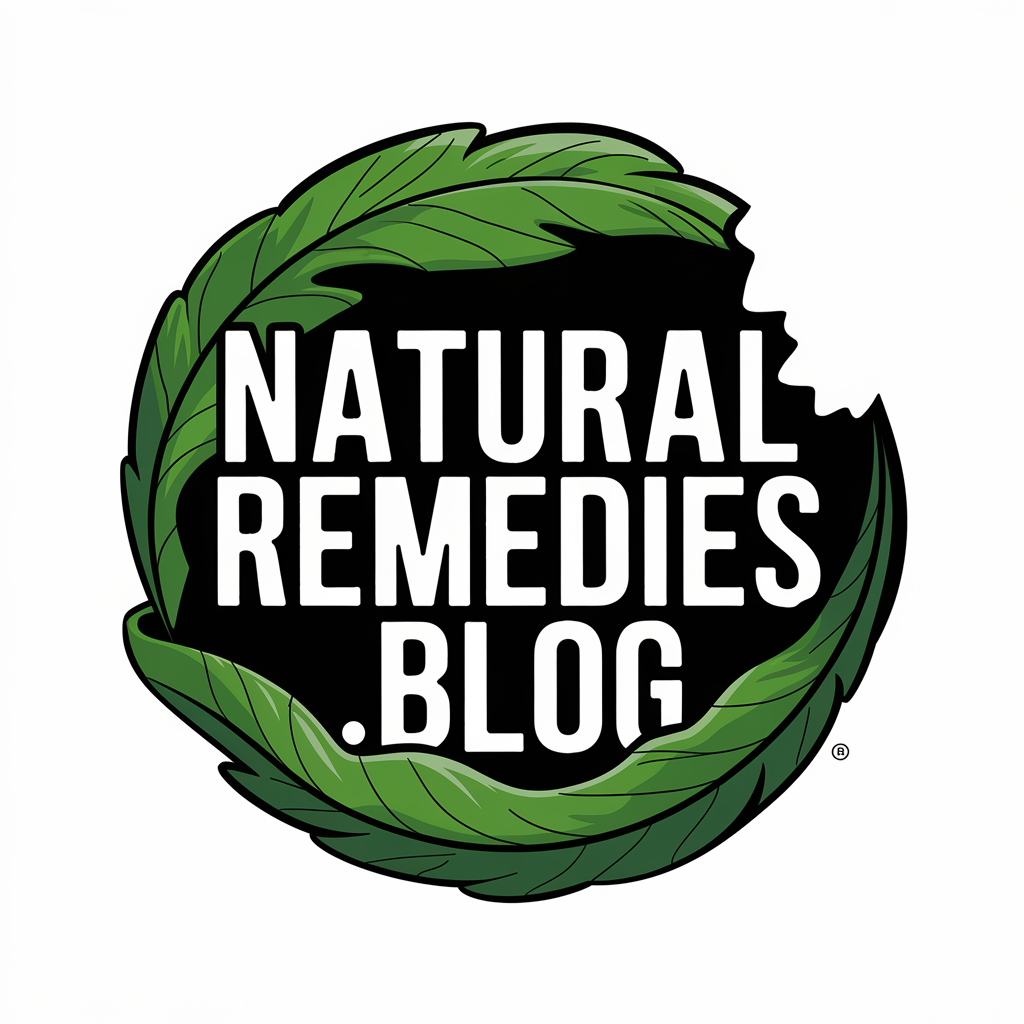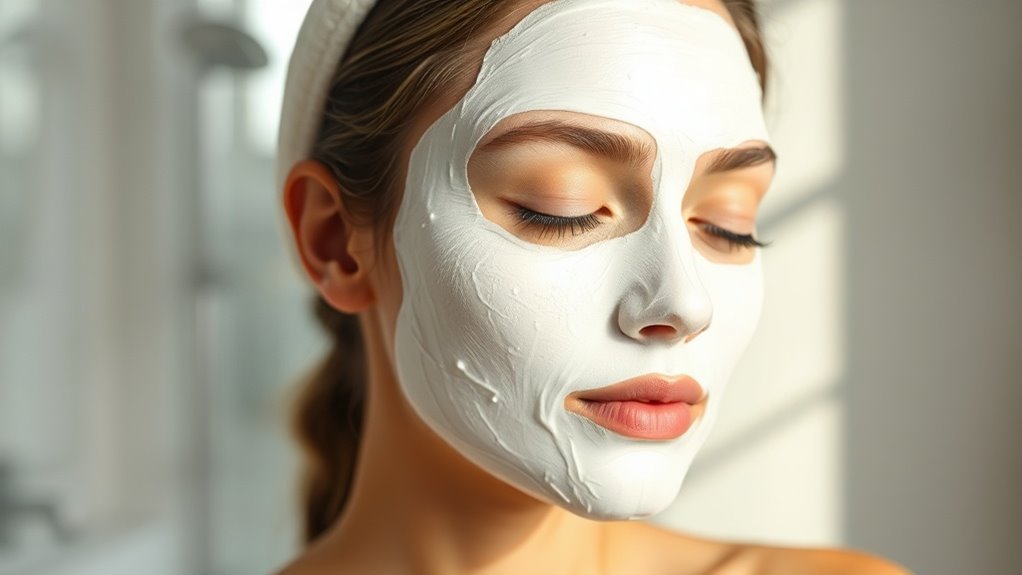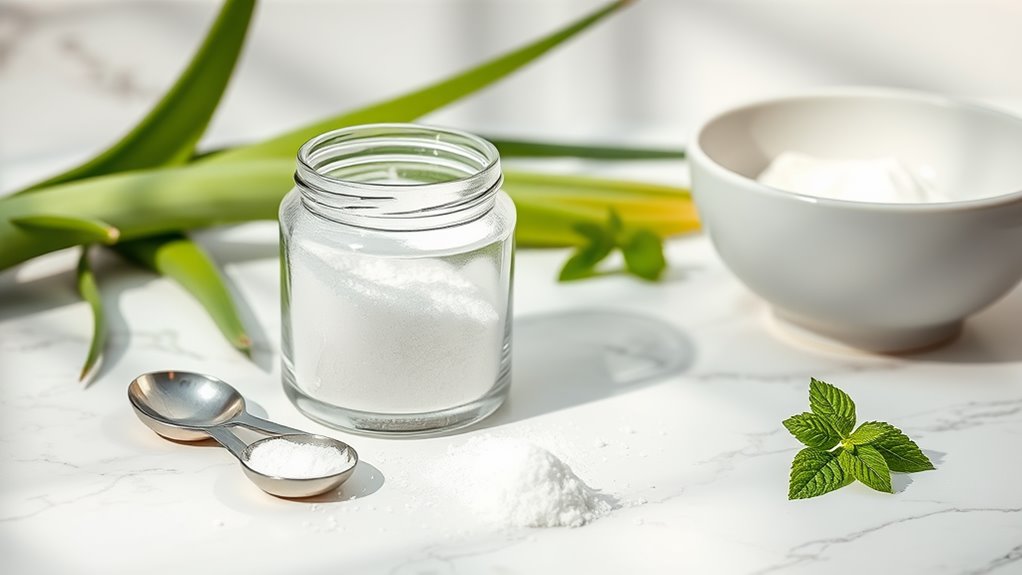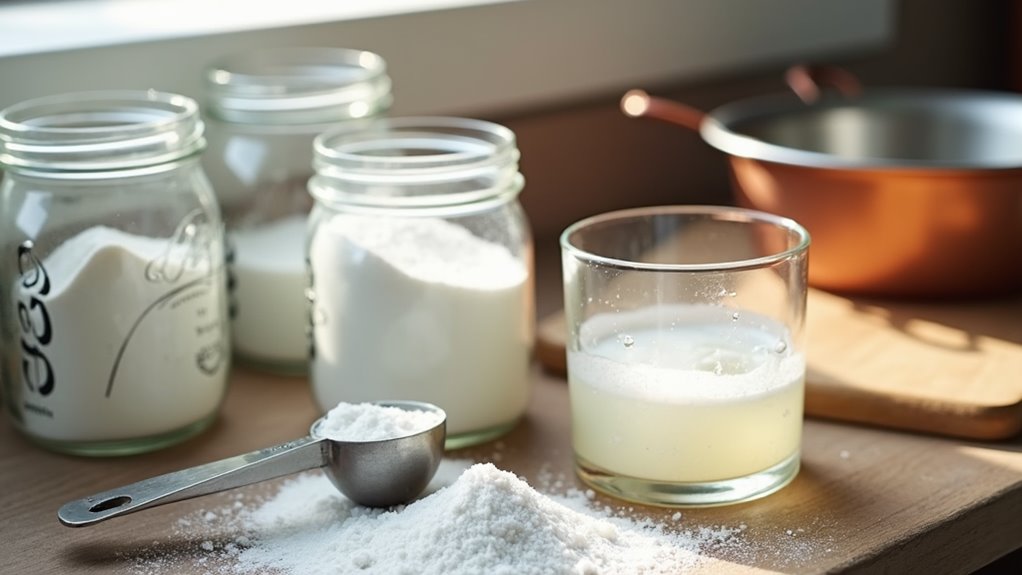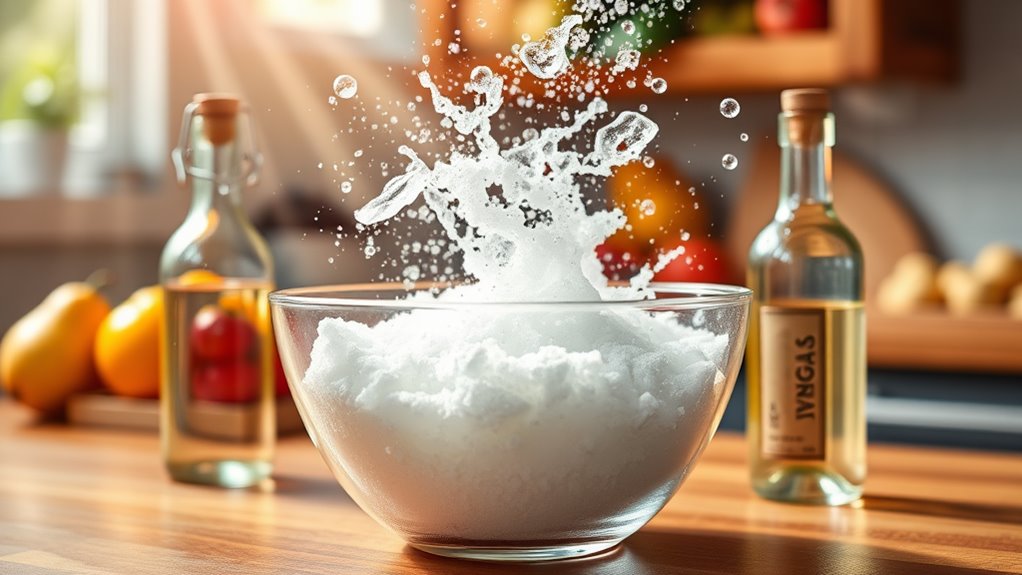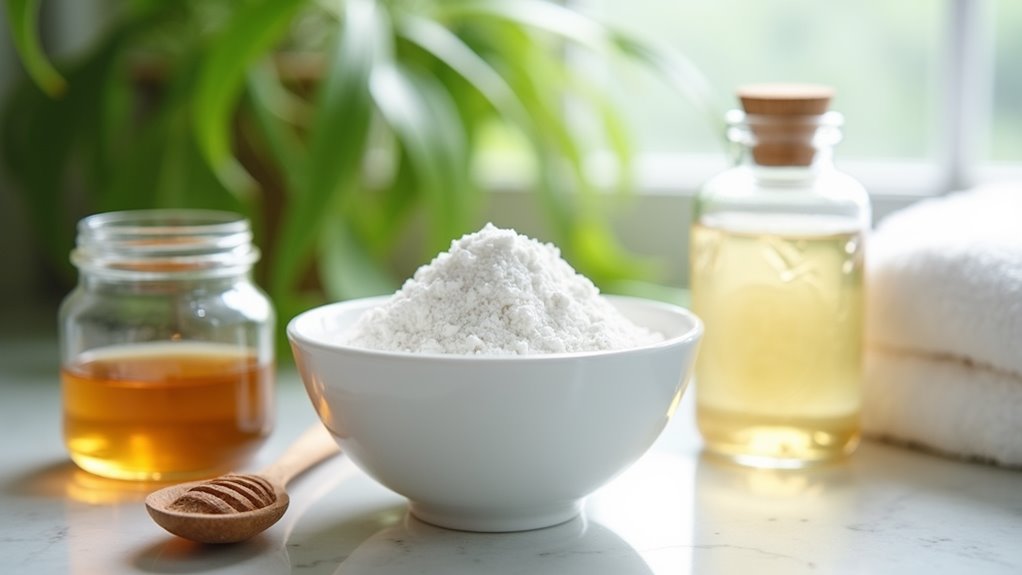Baking Soda Face Mask Everyone Is Talking About
Have you noticed how a simple kitchen staple has become the latest sensation in skincare? You’ll find baking soda face masks trending across social media platforms and beauty forums, with users reporting remarkable improvements in their complexion. While this affordable treatment has gained widespread attention, it’s crucial to understand the scientific evidence behind its effectiveness and the proper methods for safely incorporating it into your skincare routine. Let’s examine what makes this DIY treatment worth your consideration.
Why Baking Soda Makes an Effective Face Mask
Baking soda’s molecular structure and pH level make it an effective exfoliating agent for facial skin care. When you apply a baking soda face mask, its fine crystalline particles gently remove dead skin cells while its alkaline properties help balance your skin’s acid mantle.
The compound’s amphiphilic nature allows it to dissolve both oil-based and water-based impurities from your pores. Research indicates that sodium bicarbonate’s antimicrobial properties can help reduce acne-causing bacteria.
Additionally, its pH of 8.3 creates a mild chemical exfoliation effect that promotes cell turnover without harsh abrasion, making it particularly suitable for sensitive skin types. Furthermore, understanding natural sleep remedies can complement your skincare routine by promoting overall well-being and good sleep quality, which is essential for healthy skin.
Essential Ingredients and Recipe
Three core ingredients form the foundation of an effective baking soda face mask: pure sodium bicarbonate, filtered water, and an optional binding agent such as honey or yogurt.
To create the mask, you’ll need:
- 2 teaspoons baking soda (sodium bicarbonate)
- 1 teaspoon filtered water
- 1 teaspoon honey or plain yogurt (optional)
Combine the ingredients in a non-metallic bowl until they form a smooth paste. The consistency should resemble a thick slurry.
If using honey, the mixture will have increased antimicrobial properties.
Yogurt adds lactic acid, which enhances the mask’s exfoliating capabilities while maintaining skin pH balance.
Step-by-Step Application Guide
Following proper application technique guarantees ideal results and minimizes potential skin irritation.
First, cleanse your face thoroughly with lukewarm water and pat it dry. Apply the baking soda paste in gentle circular motions, avoiding the delicate eye area. Maintain even coverage across your face, using approximately 1/8 inch thickness.
Let the mask sit for 5-10 minutes, but remove immediately if you experience any burning sensation. Rinse thoroughly with cool water, ensuring no residue remains.
Follow with a pH-balancing toner and moisturizer to restore your skin’s natural barrier, as maintaining balanced pH levels is crucial for effective skincare.
Benefits for Different Skin Types
While each person’s skin responds differently to treatments, baking soda masks offer specific advantages across various skin types.
For oily skin, baking soda’s alkaline properties help neutralize excess sebum production and minimize enlarged pores.
If you have acne-prone skin, its mild antiseptic qualities can reduce bacterial growth and inflammation.
Those with combination skin benefit from its gentle exfoliating action that balances uneven areas.
For sensitive skin, use caution as baking soda’s pH levels may cause irritation.
If you have dry skin, limit mask applications to once weekly and follow with moisturizer, as the alkaline nature can temporarily disrupt your skin’s moisture barrier. Additionally, incorporating ingredients like coconut oil or honey can enhance moisturizing effects when using a baking soda mask.
Safety Precautions and Best Practices
Before applying a baking soda mask, perform a patch test on a small area of skin to check for adverse reactions. Wait 24 hours to verify no irritation, redness, or allergic response develops.
Don’t leave the mask on longer than 5-10 minutes, as extended exposure can disrupt your skin’s pH balance. If you experience burning or stinging, remove immediately with lukewarm water.
Limit use to once per week to prevent over-exfoliation.
Always mix baking soda with gentle ingredients like water or honey. Baking soda’s alkaline nature can help neutralize acid-based impurities, but avoid combining it with acidic substances like lemon juice or vinegar, as this can cause chemical burns and inflammation.
